| Columns Retired Columns & Blogs |
In my humble opinion, I have never heard a more 'perfect' loudspeaker than the MBL 101's. The 111's are no slouch either.
Great review Michael.
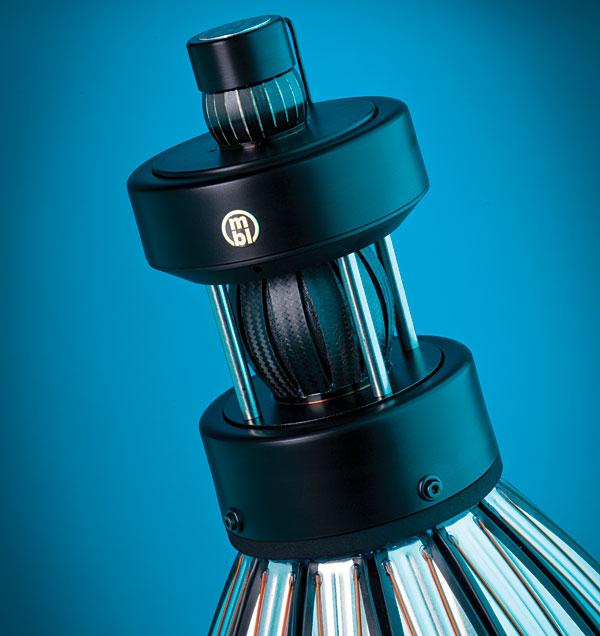
Since reviewing the original Reference 101E, I've heard them in owners' listening rooms and dealer setups around the world, some of those contexts optimized for the speakers in ways a reviewer's all-purpose room simply can't be. The results were spatially majestic and musically compelling. Ideally, this omnidirectional speaker should be placed well away from side and rear walls—something that is not possible in my room. Nonetheless, that didn't prevent the original 101E from revealing its unique virtues in my room—and, as with all loudspeakers, their limitations. Two RPG Skyline diffuser panels I've recently installed on the front wall have proved beneficial for the speakers I've subsequently heard in my room, but especially for the 101E Mk.IIs.
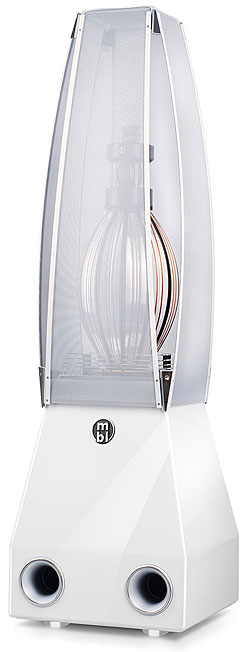 Omnidirectional sound production
Omnidirectional sound production
A signal applied to the bottom-mounted voice-coil of each of the three visible circular-section drive-units uniformly flexes each driver's array of vertical petal-like segmants to produce a uniform, 360° horizontal wave launch. This means that, unlike with a traditional driver, both the frequency and power response are uniform wherever you sit.
The amount of energy the Radialstrahlers spray into the room is enormous compared to what's produced by standard speakers with cone midrange drivers and dome tweeters, but because that energy is radiated uniformly, unlike with a conventional cone speaker the reflections from the sidewalls will be identical to the signal that's reaching you directly, though of course it will be time delayed.
While a large room with boundaries distant from the speakers provides the best environment for an omnidirectional design, as long as the reflected energy is sufficiently attenuated by room treatments, the imaging should be as good as, if not better than, what's obtainable from standard speakers. The best baffle is no baffle, and, other than for its woofer, the 101E Mk.II has none.
This doesn't mean that MBL's design has solved every speaker problem, or that it produces its benefits without cost. After all, this is the real world. The Radialstrahler design is extremely insensitive—about 80dB anechoically—which means it requires high-powered amplifiers capable of delivering ample amounts of current in order to produce realistic SPLs, even though its enormous radiating surface makes it sound louder than it measures.
By far the Reference 101E's biggest problem has always been the audible lack of seamless integration between the bass box and the stack of omnis atop it. MBL's current chief designer, Jürgen Reis, has been working for the past 20 years on this problem—which is compounded by the speaker's unique positioning requirements. Traditional cone designs can be placed wherever the bass works best, with fewer concerns about how that will affect the performance of the upper-frequency drivers. Not so with an omni like the 101E: the best position for the bass might conflict with what works best for the speaker's omnidirectional upper-frequencies.
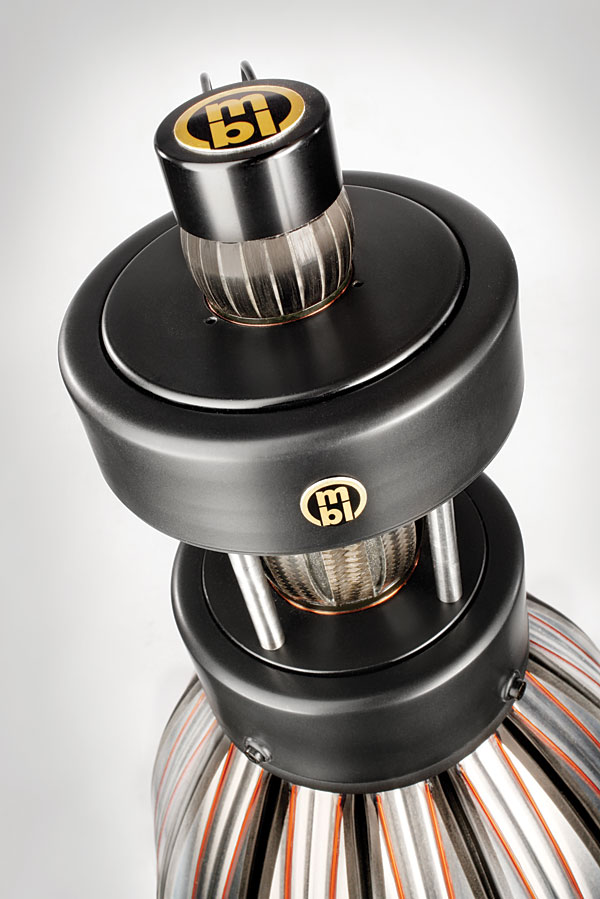
Redesigned from the ground up
Along with the woofer cabinet's new profile, the Reference 101E Radialstrahler features a better-braced, more rigid box that's now built exclusively in Germany. (Before, the parts sources ranged from Denmark to the Far East.) A higher quality of lacquer and a greater uniformity of its application produce a more finely finished and attractive cabinet.
The new 12" woofer has an aluminum cone claimed to be both light and stiff. The Mk.II retains the earlier version's bandpass-loaded design. The internally-mounted woofer fires into a chamber that communicates with the outside world via dual ports on the front of the cabinet, while the rear of the woofer is loaded by a sealed enclosure. According to Reis, the proportions of the box's interior on both sides of the cone have been altered. The new woofer system, he says, produces tighter bass with superior attack, but because that also changed the woofer's phase response relative to that of the lower midrange "melon" driver, the crossover had to be redesigned as well.
Reis told me that he also redesigned that melon. While its 12 segments continue to be made of an alloy of aluminum, magnesium, and silicon, the proportions of those metals in the alloy have changed, as has the drying curve. How fast a material cools affects its physical properties, especially its flexibility, which is why, Reis told me, as with airplane parts, the melon's petals are air-cooled for two days, which results in minimal stress. Each petal is given two days to cool. The result, he told me, is a lighter, more flexible membrane that produces a louder-sounding driver. The 101E's frequency response remains unchanged, he said, but the speaker now sounds both louder and "easier."
That change in the melon's sound meant that the 12- and 24-segment carbon-fiber midrange and tweeter also had to be revised, as did the crossover network, which is still housed in an isolated enclosure at the back of the woofer cabinet. The MBL 101E Mk.II may look like its predecessor, but it's been revised from the ground up.
On the rear panel are two pairs of hefty copper binding posts and three jumpers. With the latter, you can choose Smooth or Attack for the low/midrange, Natural or Rich for the midrange, and Smooth, Natural, or Fast for the tweeter. The tweeter's three positions select among different types of wire from the crossover: braided copper (Natural), solid-core copper (Smooth), and thin silver-plated copper (Fast).
Setting up the Radialstrahlers
Most speakers sound best in my room when placed the same distance from the front wall, but, like the original 101Es, the 101E Mk.IIs needed to be farther out into the room. But they did spend time at the usual distance; there, though there was an excess of low frequencies, double basses sounded just right on a variety of familiar material, including the reissue of Patricia Barber's Café Blue remixed by Jim Anderson (180gm LP, Premonition PREMLP9819). But there was also a hollowed-out quality to the lows that eventually became distracting. Moving the 101E Mk.IIs farther forward diminished that, but created in its place an excess of midbass energy that's typical of what you hear in audio-show hotel rooms. I played selections from the astonishing boxed set The Nat King Cole Story (5 45rpm LPs, Capitol/Analogue Productions APP-SWCL 1613); when Cole's voice dipped down to its lower register, it bloomed—and not, like a flower, attractively. Even Julie London's lower register bloomed, which MBL's Jeremy Bryan heard as he moved the 101Es around, trying to find the right spots.
Those spots ended up being where the speakers were somewhat closer together and thus farther from the sidewalls. Although there was a hint of bass bump even there, the vocal bloom disappeared, indicating that the shift had produced smoother response above the bump.
Even though my room is not small, the Radialstrahlers needed more space than I could give them—to perform at their best spatially and tonally, they should be farther away from room boundaries than I could place them. Still, once their positions were optimized here, the sound was mesmerizing; nothing fettered my listening pleasure in the months the MBLs were in my system. As I wrote in my 2004 review of the original version, "When everything—or anything—was wrong, there was an odd chesty, compressed, almost grainy midbass coloration, and a sense that female singers centered between the speakers were performing in a closet in the next room. The offending sound was probably due to an unusual combination of placement and reflective interference. But when that nastiness had been eliminated and everything had been optimized, including cables, AC treatment, and the jumper selections [Smooth/Natural/Smooth, same as last time], look out!"
Sound still spectacular!
Despite the one obvious peak (at least in my room), the 101E Radialstrahler's new woofer system was clearly a major step forward, even in less than ideal circumstances. The low bass seemed to extend significantly deeper, and the bottom octaves were punchier and better defined than I remember hearing eight years ago. I described the original 101E's bass as "far weaker at 30Hz." Not this time.
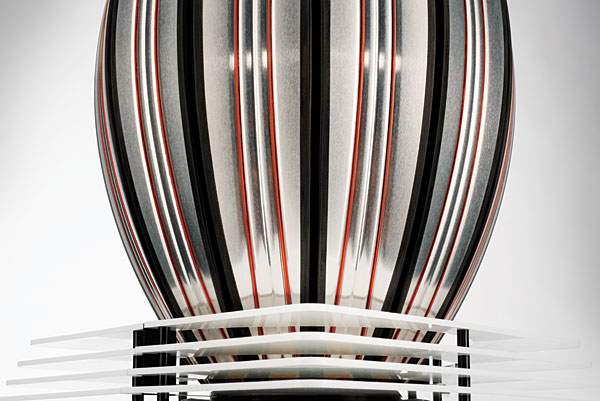
While I described the bass last time as being "slightly lean but tight," now there was no leanness at all; when I drove the speakers with either MBL's Reference 9011 monoblocks or Musical Fidelity's Titan, the integration of the woofer's and melon's outputs was far smoother. Driven by the Titan, the 101E Mk.II's bass was definitely tighter, punchier, and better defined; driven by the Reference 9011s, it was fuller-bodied and more effusive. After acclimating to the sound of the 101E Mk.IIs, I replaced MBL's spikes with sets of Stillpoint Ultras. It was as if the speakers had been liberated from the floor: the bottom became even "grippier" and better defined. If you own MBL Radialstrahlers—or any floorstanding speaker—this is definitely a worthwhile tweak. (I haven't yet installed them on my Wilson Audio MAXX 3s.)
Above the improved bottom octaves, everything there was to love about the older 101Es remained. Can I tell you with great specificity how the sounds of the two versions differed, given that my reference system has entirely changed in the long meantime? No more than you can physically distinguish them without a side-by-side comparison, and I didn't have an older pair handy. But I'm fairly certain that the transition from woofer to melon has been substantially improved, and that the 101E now sounds more of a piece than before.
How revealing was the 101E Mk.II? Looking back at my review of the 101E, I can't help but wonder if I wasn't to some degree inadvertently reviewing the Musical Fidelity kW amplifier I was using at the time, and not the MBLs themselves. Compared to MF's Titan, the kW was leaner in the bass, and "tonal balance leaned slightly toward the bright and less-than-rich side"—which was how I described the 101E in 2004.
Unlike the older 101E, the Mk.II's overall balance didn't lean slightly toward the bright and less-than-rich side, driven by either the Reference 9011 or the Titan. Though it did sound fuller and richer when driven by the 9011, the speaker sounded smoother, more relaxed, and not quite as hot in the upper octaves when driven by either amp, without losing any of its open, airy, spacious, and attractively crystalline qualities.

In my humble opinion, I have never heard a more 'perfect' loudspeaker than the MBL 101's. The 111's are no slouch either.
Great review Michael.

It would have been helpful to me if you had included your listening room size as a referent given the importance placed on listening room size in the review.
IIRC, Mikey's room is approximately 25' by 18' by 8'.
John Atkinson
Editor, Stereophile

The MBL 101E MK II and it's big brother the X-Treme comes closer than any other speakers I can think of to bringing the live performance to the listener. The power, scale, and effortless, room-filling sound really transport the listener to the artist. It cannot be emphasized enough how these speakers can convey the emotion of music.
I heard them at AXPONA last year and at CES this year. Each time it is really an experience. I can't wait to hear the them again at the New York AV show.

Hello Michael.
Can you give your thoughts on whether or not a higher measured efficiency rating for the 101E Mk IIs would improve the sound/performance? Is it even possible to appreciably increase efficiency with this type of design? I am in the "High Efficiency" camp for speakers, for the most part, and find the very low 81 dB(B) measured spec of the MBLs to be somewhat of a turn-off for me. I'm trying to imagine how this speaker would perform if it had a sensitivity rating of 90 dB or higher.
Thanks, and take care.
Allen

they can change the efficiency rating of those speakers. They are what they are, just like planer speakers typically have low efficiency ratings as well. it's the nature of the way the drivers are designed with their stave design. It's more of a matter of what type of power you need to drive them more than sound quality. That's why MBL has relatively high wattage power amps to drive them and the amps have to be of decent quality, which unfortunately are typically more expensive.
MBL would have to use traditional cone drivers to get something in the 90dB efficiency level, but as you can see, they only use traditional cone drivers for their subwoofers and not their other drivers.

drblank commented, "...as you can see, they only use traditional cone drivers for their subwoofers and not their other drivers."
Each of these loudspeakers includes a single twelve inch woofer in bandpass alignment in the lower enclosure. There are no separate subwoofers in the system under review.
The larger and much more expensive MBL 101 X-Treme MKII Radialstrahler System (half of it shown below) includes a pair of separate subwoofers, each is six feet tall with six twelve inch woofers, for a full dozen twelve inch woofers in total. And it does not use bandpass alignment on the woofers, as you can see.
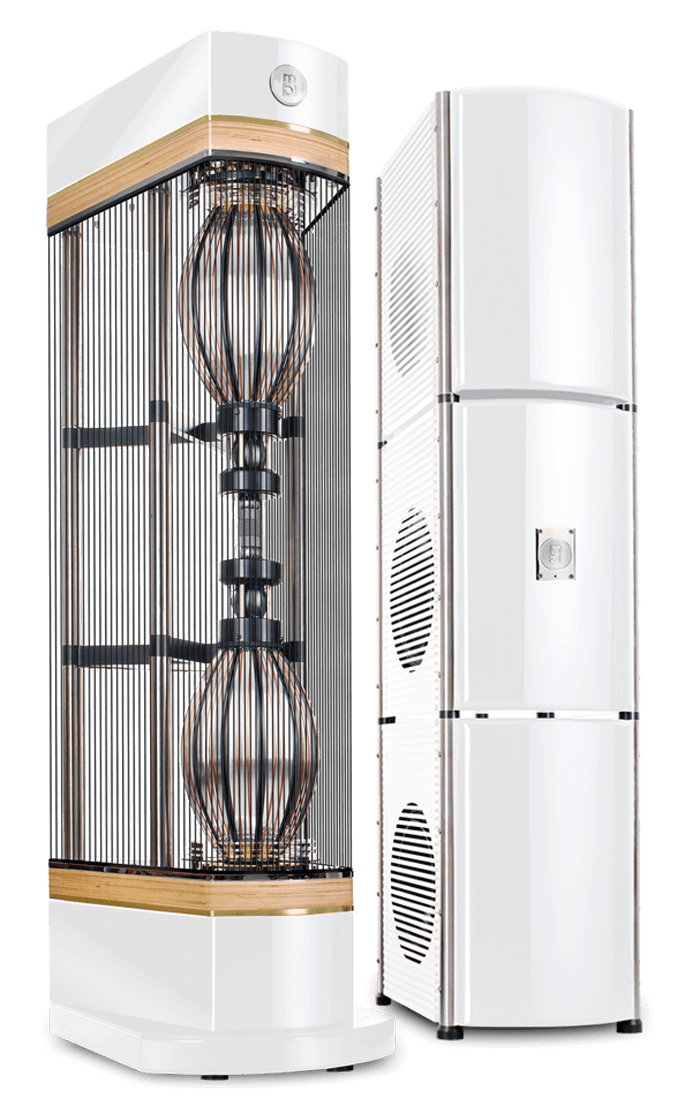

Snatch them up while you can!

Despite Fremer's foray into cable silliness, this was a well written, hard hitting review. The speaker's unique design and the few aspects that were measured beckon for more detailed measurements. I suspect that distortion measurements conducted at different drive levels would be more revealing of the significant challenges posed by the design of the drivers in this speaker.
Stereophile should also be putting more of its limited financial resources into supplying ancillary equipment to support reviews like this. Instead of flying more "journalists" to the next social gathering trade show, why not invest in a few hundred square feet of room treatment panels to outfit the listening room of a reviewer who intends to audition a pair of omnidirectional speakers? This exercise was a little like test driving a Bugatti Veyron in a Piggly Wiggly parking lot full of aging Floridians pushing their Ensure and Depends laden shopping carts...